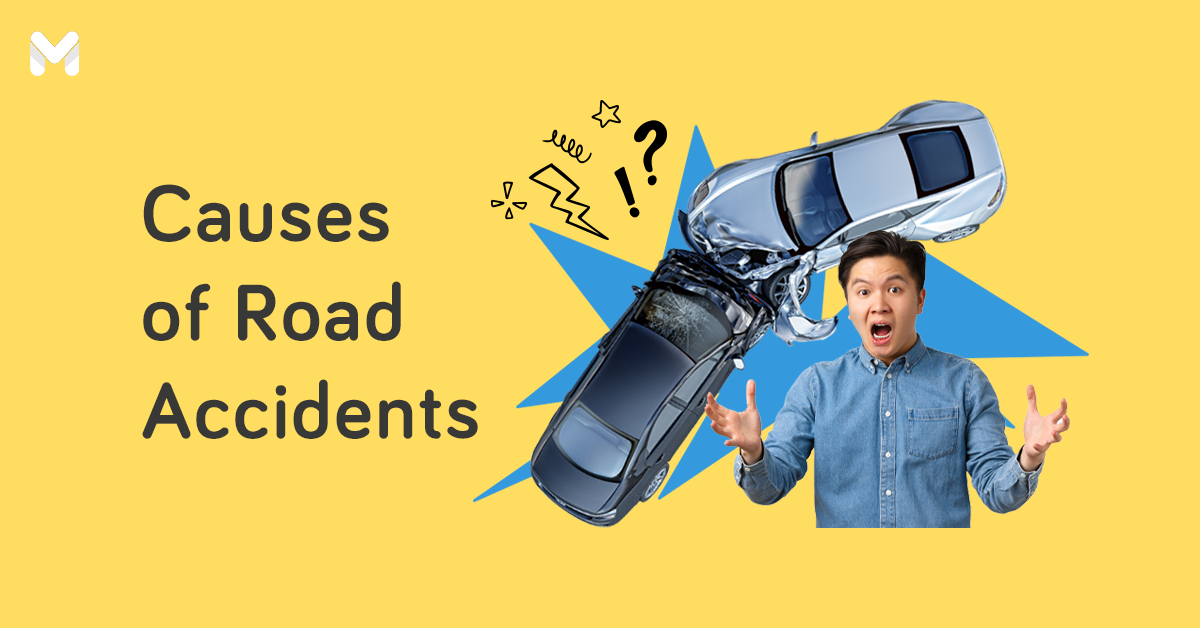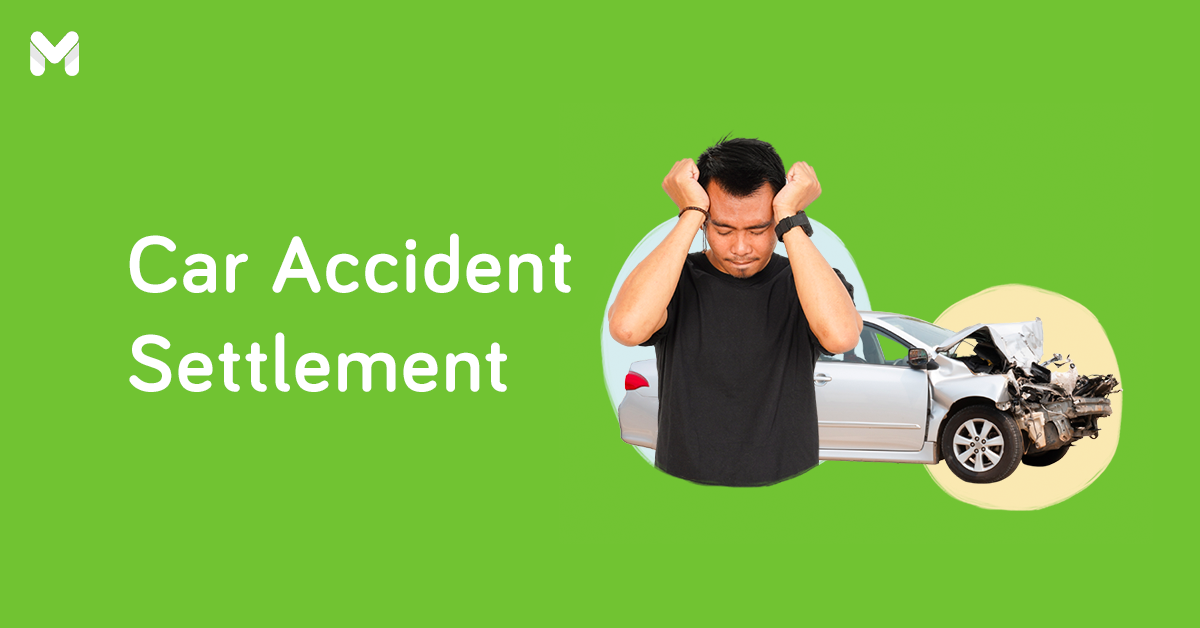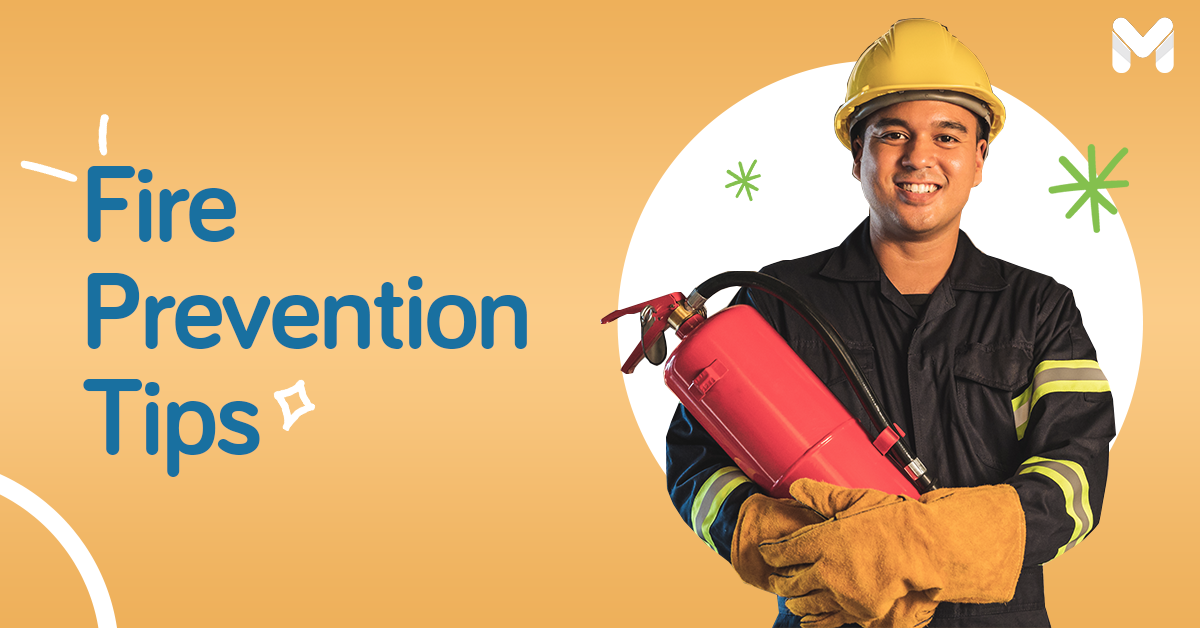These days, you might be hard-pressed to think about the danger of driving in the Philippines, mostly because the traffic in Metro Manila has gotten to the point where main roads are congested even in the wee hours.
Moreover, certain roads out there require extra care when navigating through them. Some of these roads are notorious for having high incidences of vehicular collisions and fatalities. These roads can be considered some of the most accident-prone areas.
In 2020, the most number of drivers was killed due to road accidents, based on data from the United Nations Economic and Social Commission for Asia and the Pacific’s (UNESCAP) Sustainable Urban Transport Index (SUTI) for Metro Manila and Impacts of Covid-19 on Mobility. The average between 2016 and 2020 was 213.2 drivers killed, representing 53% of the fatalities.[1]
The numbers are staggering. So drive with utmost care and always be on high alert when you’re passing through any accident-prone area.
Accident-Prone Area List: 7 Most Dangerous Roads in Metro Manila
On Metro Manila roads, defensive driving is a must. Knowing where the most accident-prone areas are can also be a big help. It will remind you to drive more carefully and to take the necessary precautions on the road. Here are the most accident-prone roads you should take note of.
1. EDSA

In the 2020 MMARAS Annual Report by the Metro Manila Development Authority (MMDA), there had been a total of 7,319 road accidents on EDSA, 6,067 of which resulted in damage to property, 1,226 resulted in injuries, and 26 resulted in death.[2]
Furthermore, the average road crash rate per day that resulted in damage to property is 137 cases, while the average road crash rate for road accidents that resulted in non-fatal injuries is around 39 cases per day.
As the longest and busiest thoroughfare in the metro, EDSA is where a high volume of cars passes through, increasing the odds of a collision. In fact, the number of accidents on this road reached such a high that MMDA officials had it blessed in 2012, following a bus crash on the EDSA Ortigas flyover.
According to the MMDA report, most deadly road accidents on EDSA usually occurred before dawn and late at night when the road is less congested. Jaywalkers and overspeeding motorists ignore road signs and break traffic rules.
Top 5 Accident-Prone Areas Along EDSA
The MMDA’s latest road safety findings reveal the most dangerous parts of EDSA. Be very careful when traversing these accident-prone areas to avoid meeting an accident:
- Aurora Blvd. – P. Tuazon Blvd.
- Ortigas Ave. area (Guadix Drive to Rochester St.)
- Quezon Ave. area
- Timog Ave. – Kamias Road – QMart area
- West Ave. area (SM North)
- Aurora Blvd. – P. Tuazon Blvd.
- Ortigas Ave. area (Guadix Drive to Rochester St.)
- Quezon Ave. area
- Timog Ave. – Kamias Road – QMart area
- West Ave. area (SM North)
2. C-5 Road
Next on the list of accident-prone areas in Metro Manila is the Circumferential Road 5 (C-5). This 32.5-km. stretch of highway traverses Las Piñas, Parañaque, Pasay, Makati, Taguig, Pasig, Quezon City, and Valenzuela. It’s second to EDSA in terms of total road accidents in 2020 (including damage to property, non-fatal injuries, and deaths) with a total of 5,208 road mishaps.
There were 4,230 road accidents along C-5 that resulted in damage to property, 960 that resulted in non-fatal injuries, and 18 that resulted in deaths.
Like EDSA, accidents happen along C-5 in the wee hours when drivers of cars and trucks usually go past the speed limits. There’s also the threat of thrown rocks hitting your windshield, usually from people on the pedestrian overhead bridges.
Top 5 Accident-Prone Areas Along C-5 Road
According to the MMDA road safety report, these are the parts of C-5 where most accidents happened in 2020:
- Aurora Blvd. area
- C.P. Garcia Ave. – Magsaysay Ave. – Pansol area
- Julia Vargas Ave. – Lanuza Ave. area
- McKinley Hill (SM Aura and Market! Market!)
- Pinagsama – Diego Silang BCDA Area
3. Commonwealth Avenue

Dubbed the “killer highway” of Metro Manila, Commonwealth Avenue is one of the most accident-prone roads in the Philippines. Why is Commonwealth Avenue called the “killer highway,” you ask?
Given the massive size of this 18-lane, 12.4-km. highway, collisions happen because of jaywalkers and reckless, overspeeding bus drivers. The lack of road signs and designated lanes for motorcycles and bicycles also increases the likelihood of accidents.
For fans of the show “Game of Thrones,” Commonwealth Avenue also used to be jokingly called “The Wall” because of its remote location, leading to the northern parts of Quezon City.
While lower incidences of collisions leading to deaths have happened in the past few years (thanks to the MRT-7 construction that has narrowed the lanes), Commonwealth Avenue still requires a certain amount of caution to travel through.
Top 5 Accident-Prone Areas Along Commonwealth Avenue
Most accidents on Commonwealth Avenue in 2020 happened at the following locations:
- Don Antonio area to St. Peter Church
- Elliptical Road to Technohub area
- IBP Road Sandigan (COA) – BF Road Meralco
- Tandang Sora Ave. – Luzon Ave. area
- Zuzuarregui St. – Feria Road – Diliman Preparatory
Keep an eye out for risks like stubborn pedestrians and reckless drivers when passing through any of these areas.
4. Quezon Avenue

This 7.1-km. stretch of road is one of the busiest and one of the most accident-prone in the Philippines. According to the MMDA report, there were a total of 1,178 road accidents on Quezon Avenue in 2020: 254 led to injuries and four resulted in deaths.
Just recently, a motorcycle rider fell to his death from EDSA to the Quezon Avenue tunnel. The rider was traversing Quezon Avenue, heading east towards Quezon Memorial Circle, when he hit the center island at the intersection of Quezon Avenue and EDSA, causing him to fall into the tunnel and die at the scene. This happened at around three in the morning.[3]
Top 5 Accident-Prone Areas Along Quezon Avenue
MMDA lists the following as the most accident-prone areas along Quezon Avenue.
- Agham Road and BIR Road area
- Don A. Roces Ave. – Sct. Chuatoco St. area (Fisher Mall)
- E. Rodriguez Sr. Ave. – Banawe St. – Cordillera St. area
- Sgt. Esguerra St. (Hi-Top) – Examiner St.
- Timog Ave. – West Ave. area (Delta)
5. Roxas Boulevard

Do you often pass through Roxas Boulevard? Then you should know that it’s also one of the most accident-prone areas in the metro, logging a total of 1,401 road accidents in 2020, 319 of which caused injuries. There are also seven recorded deaths.
Though the view while driving here is pretty breathtaking, especially at sunrise and sunset, always be careful. It’s a dangerous road to navigate.
Top 5 Accident-Prone Areas Along Roxas Boulevard
Here are the most accident-prone areas along Roxas Boulevard:
- Buendia Ave. area
- ESDA to Cuneta Astrodome area
- MIA Road to Baclaran area
- P. Burgos St. (Katigbak) – T.M. Kalaw Ave.
- President Quirino Ave. to P. Ocampo St.
6. Marcos Highway

This is 117.5-km. highway traverses Marikina, Rizal, Laguna, and Quezon. It has bike lanes and U-turn slots, as well as access roads to some of the major malls in the area, making it one of the busiest highways in the Philippines and one of the most accident-prone. According to the MMDA, there were 514 recorded road accidents in the area in 2020.
Most Accident-Prone Areas Along Marcos Highway
The following are the most accident-prone areas along Marcos Highway:
- A. Rodriguez Ave. (J.P. Rizal Ave.) Ayala Malls area
- Barangka area – SM Marikina
- Dela Paz – Gil Fernando Ave. – Burger King area
- LRT Station – Santolan area
7. R-10
Radial Road 10, more commonly known as R-10, is a 105-km. network of roads that will link Manila and Bulacan, Pampanga, and Bataan upon completion. Currently, only the Manila-Navotas segment is open for motorists. And in 2020, there were 839 recorded road accidents here, seven of which caused fatalities.
Top 5 Accident-Prone Areas Along R-10
The most accident-prone areas along R-10 include:
- C-3 Road – Lapu-Lapu Ave.
- Capulong St. (C-2 Road) – Jacinto area
- Moriones area to Pacheco area
- Vitas area
- Zaragosa St. to Lakandula area

Other Dangerous Roads in the Philippines
There are more dangerous and accident-prone highways and roads to add to the list. Take note of these locations.
Quirino Highway
One of the accident-prone roads in Metro Manila, Quirino Highway sees a large concentration of vehicles on a daily basis, given that it’s one of the access roads that lead out of Quezon City, cutting through Novaliches, parts of Bulacan, and the North Luzon Expressway Interchange. Most accidents along Quirino Highway were caused by drunk driving and overspeeding.
Alabang-Zapote Road
As an access road out of Las Piñas and to the southern areas of Metro Manila, Alabang-Zapote Road gets clogged up by people heading to and from the metro.
While accidents on this road are fewer than on other roads in Metro Manila, that doesn’t mean they don’t happen. With clogged roads, tailgating can cause minor fender benders and high odds of motorists giving in to road rage
Kennon Road

The historic Kennon Road is the shortest route to Baguio City from Manila. Considered one of the most dangerous roads in the Philippines, Kennon is particularly hazardous during the typhoon season when landslides occur.
Since 2014, it has recorded two to five deaths per year. From February to May 2019 alone, around 1,000 accidents have already happened on Kennon Road.
Drivers also need to carefully navigate through Kennon Road's blind curves, sharp hairpin turns, and slippery and foggy conditions. Observe the speed limit of 40 kph to avoid colliding with another vehicle.
This century-old road has been repeatedly closed for rehabilitation work, especially after heavy rainfalls. Sometimes, it's temporarily opened to accommodate more tourists during Holy Week, Baguio festivals, and other special occasions.
If you'll go to Baguio, an alternate route you can take is either the Asin-Nangalisan-San Pascual – Rizal-Anduyan Road or Marcos Highway.
Halsema Highway

Halsema Highway (also called Baguio-Bontoc Road or Mountain Trail) is the only link between Baguio and the most remote areas of the Cordilleras.
A long and winding road beside the mountains, it’s also the highest altitude highway in the Philippines. As beautiful as it is, Hanselma Highway was also widely considered to be the deadliest road in the country prior to being paved in 2011.
In spite of that, there’s still a chance of landslides and treacherous terrain when traveling along this road. Huge stones and debris may fall from the peaks, and fog can impair visibility. These road conditions make driving along Halsema Highway very challenging, especially at nighttime, so be extra cautious of this accident-prone area.
Sampaloc Road
Sampaloc Road, dubbed Magnetic Hill by locals, is infamous for a bus crash in 2017 that claimed the lives of 15 passengers, mostly college students on their way to a field trip. There had been other collisions on the road that involved vans and trucks.
Driving along this hazardous road in Tanay, Rizal feels like going against gravity. An official of Tanay's Disaster Risk Reduction and Management Office couldn't have described it better: “When you’re ascending, it seems like your vehicle is being prevented from going upward. When you’re descending, it’s like you’re being pushed further downward."
Aside from the difficult terrain, the road also has very sharp curves that lead to blind spots. It also lacks protective barriers and proper road signs.
In most collisions, drivers are either unfamiliar with the terrain or drunk.
Old Zigzag Road

If you often hear news about accidents involving large trucks and provincial buses in Atimonan, Quezon, chances are high that they happened on the Old Zigzag Road. Also known as Eme Road, it connects the towns of Atimonan and Pagbilao in Quezon province.
This scenic yet deadly road is nicknamed “Bitukang Manok,” as its twists and turns resemble chicken intestines. There's an accident-prone area on Zigzag Road that the locals call siko, which is bent like an elbow. A single mistake while driving there can cost motorists their life.
Authorities now discourage buses and trucks from passing through Old Zigzag Road. Instead, they can take the Maharlika Highway diversion road that connects Metro Manila and Bicol.
Tagaytay-Talisay Road

The Tagaytay-Talisay Road is a mountain highway connecting Tagaytay City in Cavite and the town of Talisay in Batangas. It offers a picturesque view and an adrenaline rush for adventurous drivers.
However, traversing this complicated and dangerous road isn't for the faint of heart. The small, narrow road has some hairpin turns and steep areas that are difficult to navigate, especially for inexperienced drivers.
Safety Tips on Navigating Dangerous Roads in the Philippines
What should you do when you see the traffic sign "accident prone area"? When a road or highway is accident-prone, it means the risks of getting into a road accident are higher compared with another area of that same road. It may be accident-prone because of the road conditions or environmental factors. But whenever you see this sign, slow down immediately, be alert, and take extra precautions.
Whether you’re traveling a short distance or not, be responsible when you’re behind the wheel, especially when you’re on accident-prone roads. Here are some tips to keep in mind.
Maintain Your Distance
It’s important to keep a good distance between you and the vehicle in front of you because this gives you more time to recognize a hazard and react safely. To know if you’re maintaining a good distance, think of the Three-Second Rule.
When you're following a vehicle, choose any roadside marker such as a tree, lamp post, or prominent road sign. And then, when the vehicle in front of you passes through this marker, count how many seconds it takes you to pass the same marker or spot.
If it's shorter than three seconds, you're still too close behind. Add more space between you and the vehicle ahead. Doing so will help you avoid rear-end collisions because it gives you more time to step on the brakes and move to safety.
Be Alert
Watch out for blind spots, road hazards, and signals on the road and from other vehicles. Pay attention to other drivers. Be aware of what’s happening around you so that you can proactively avoid any road mishap.
Remove Any Distractions
To stay focused on the road and your driving, remove anything that may cause distractions like maps, phones, or food. If you’re really hungry or need to send a text or make a phone call, safely pull over to the side of the road.
Remember that taking your eyes off the road for even a second can mean the difference between life and death.
Always Wear Your Seat Belt

It’s basic, and it takes only a few seconds. Still, you’ll be surprised by the number of drivers and passengers who fail to buckle up. Wearing your seat belt can save your life.
Stay Within the Speed Limit
No matter how much you want to floor it, always follow the speed limit. Don’t run any red lights or speed up at yellow lights. Most importantly, slow down when you see the Accident-Prone Area sign.
Don’t Drive If You’re Not Feeling 100%
Never get behind the wheel if you’re drunk, sick, or sleepy. Make sure that you’re physically well and mentally alert if you’re going to drive. If not, you can always ask someone to drive you. Better yet, you can just book a ride.
Get the right amount of rest before you travel, or make regular stops if you’re driving long distances to prevent driver fatigue. And if you really can’t keep your eyes open anymore, pull over, kill the engine, and have a quick nap.
Make Sure Your Vehicle is in Excellent Condition
Knowing that your vehicle is in top condition gives you peace of mind. So make sure to tick off all the items in your BLOWBAGETS checklist (brakes, lights, oil, water, brake, air, gas, engine, tire, and self!) before driving off so that you don’t have to worry about car problems.
Always Bring Your Car Insurance Documents
Proof of car insurance coverage is essential, so make sure to always have your car insurance documents inside your car. It’s also important to know your emergency numbers so you’ll know what to do in a car collision or what to do if you hit someone with your car. This can also facilitate a quick and hassle-free car accident settlement in the Philippines.
Remember: Even if you’re the most careful driver in the world, other drivers may not care at all about their driving errors. Save yourself the headache and the financial stress of paying for repairs out of pocket by getting your car insured.
Final Thoughts
You can’t predict road accidents, but you can avoid them by practicing road safety. Even if you hear about them on the news all the time, the MMDA and other relevant government agencies are doing what they can to help mitigate these incidents, like deploying paramedics on most major roads in case of an accident.
Still, it pays to check your car and yourself before traveling. Drive as carefully as you can and pay attention to what you’re doing on the road, especially if you’re in an accident-prone area.
Get a Free Quote on Car Insurance in the Philippines!
Planning to get motor insurance? Compare the best ones for you here on Moneymax and request a free quote!
Sources:
- [1] Amid NCR pandemic curbs, road mishaps kill 345 people everyday (Business Mirror, January 2022)
- [2] 2020 MMDA-TEC-Road Safety Unit MMARAS Annual Report
- [3] Biker falls to death in tunnel (PhilStar, July 2022)









